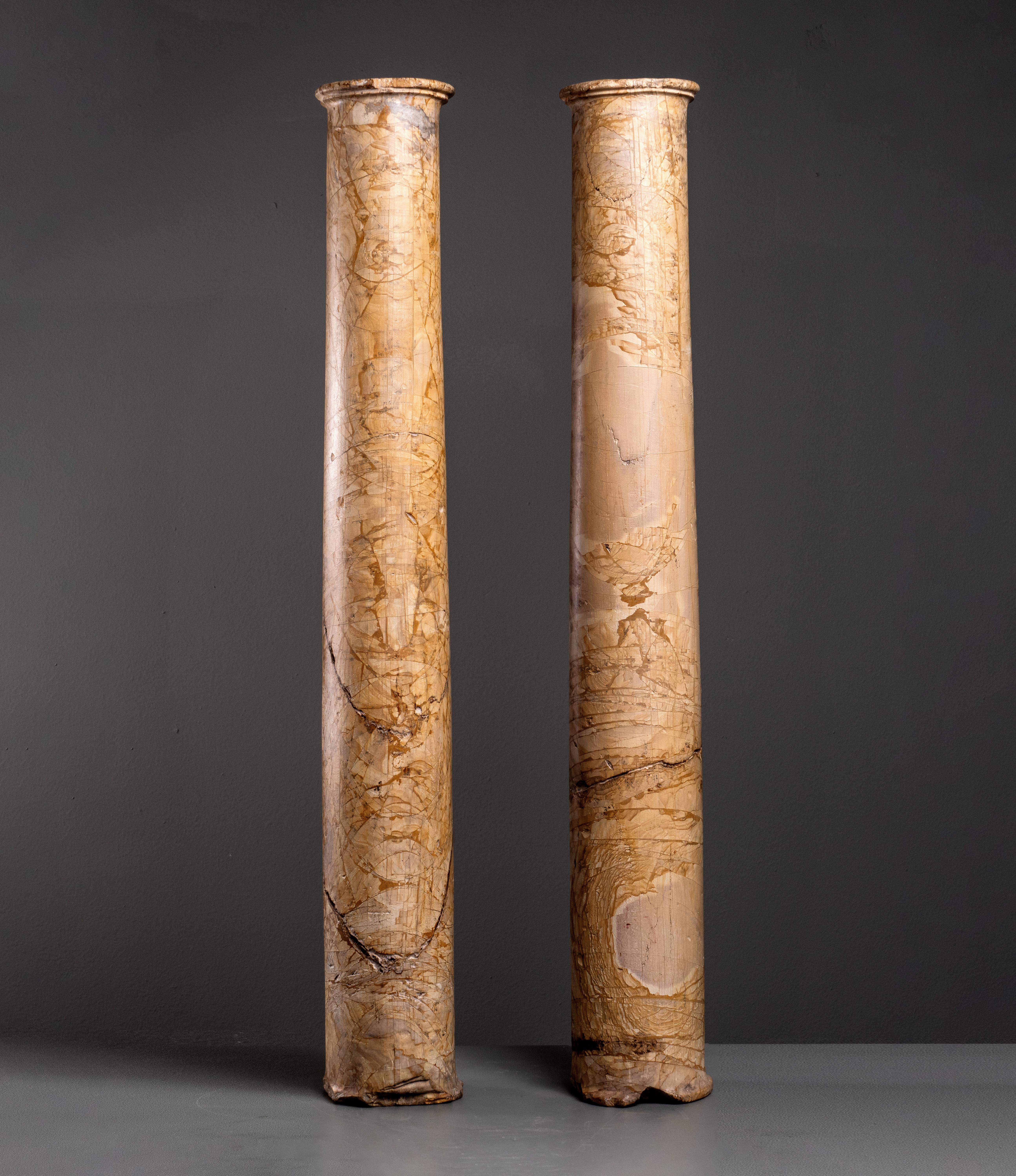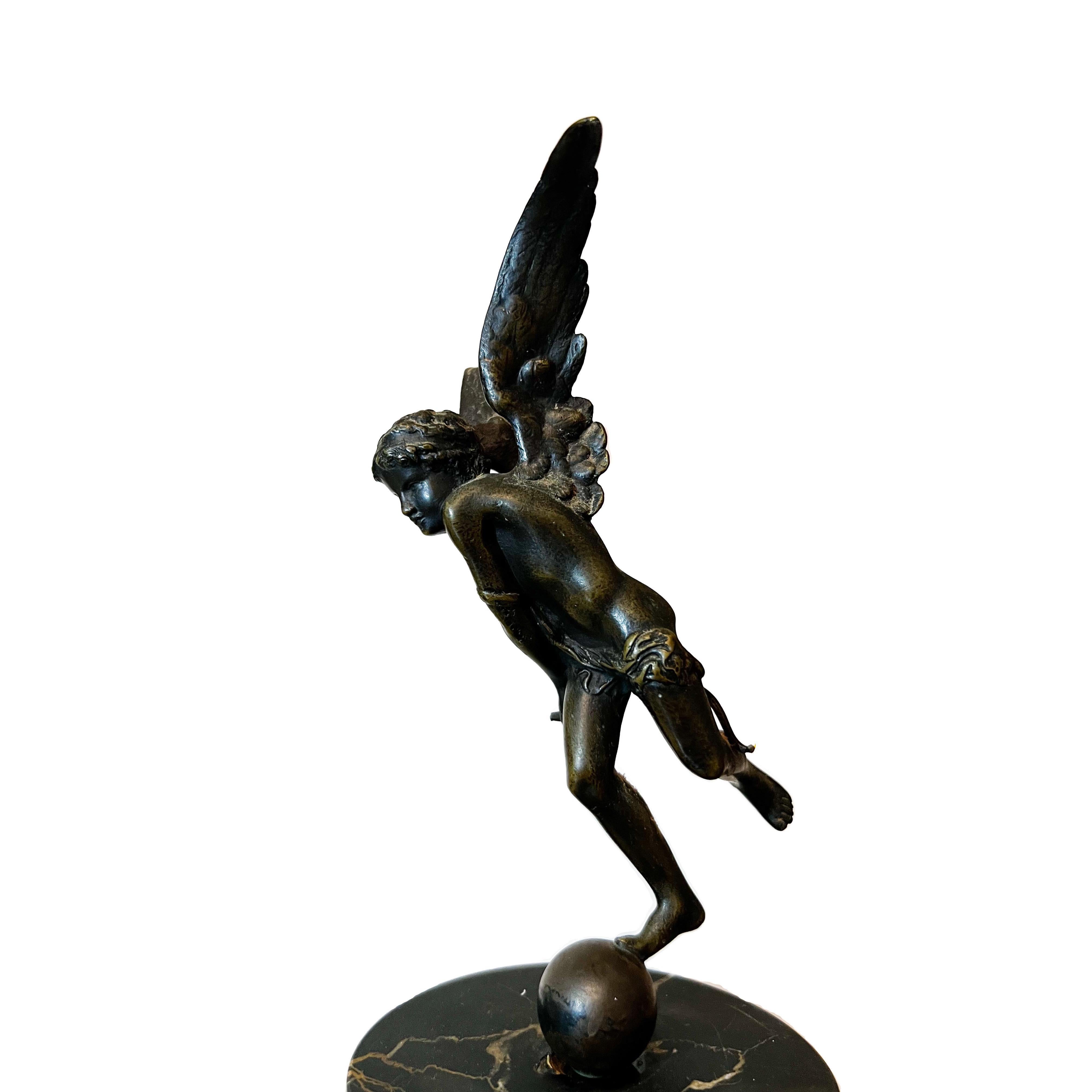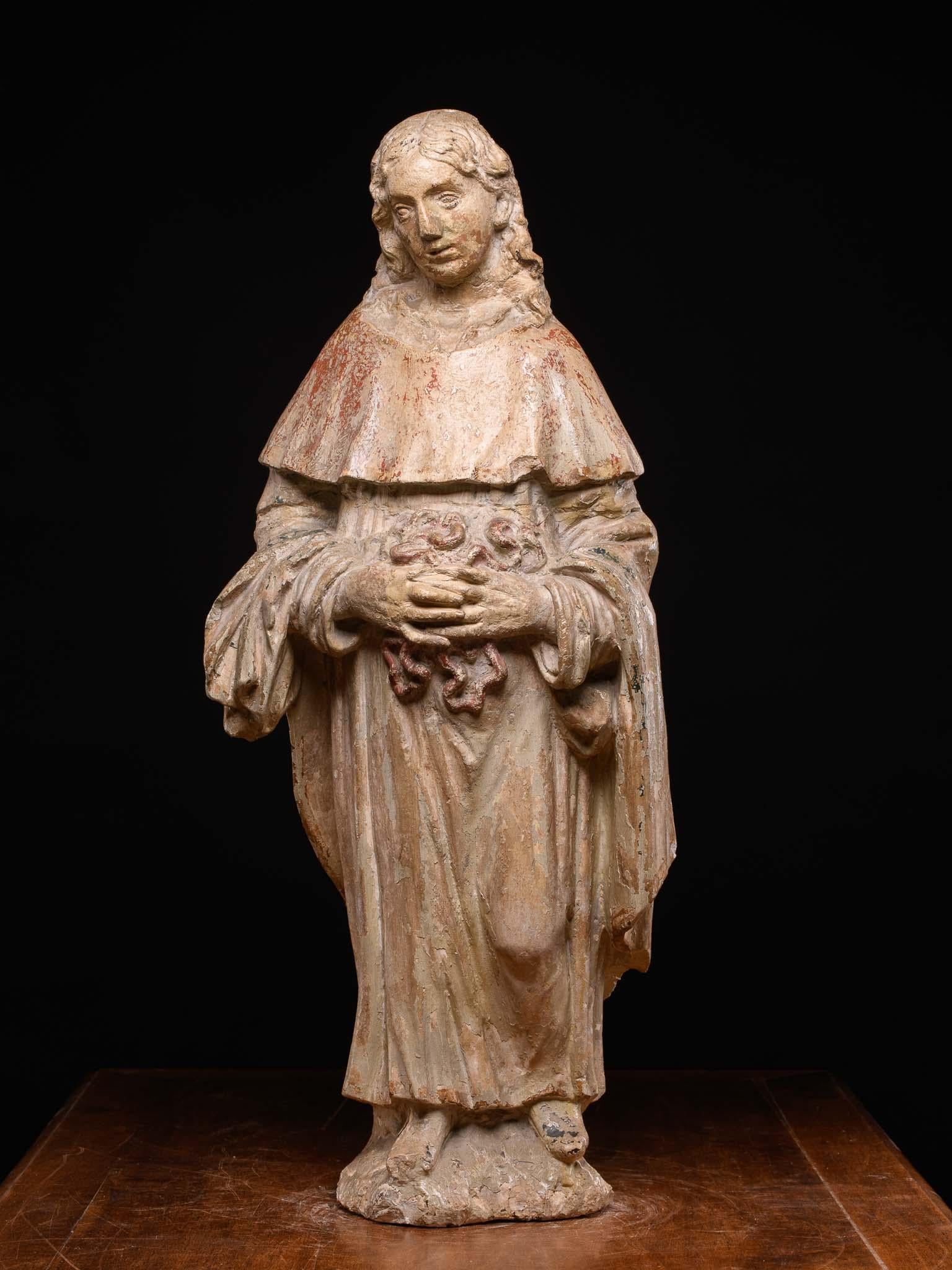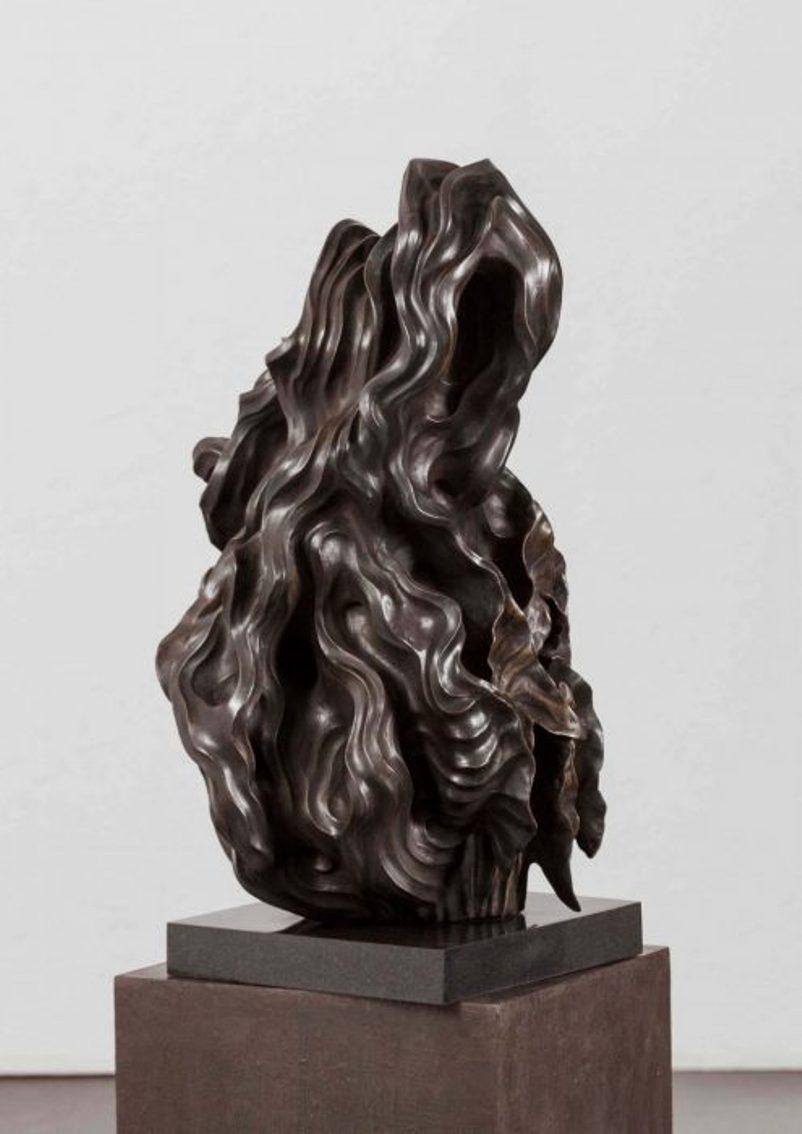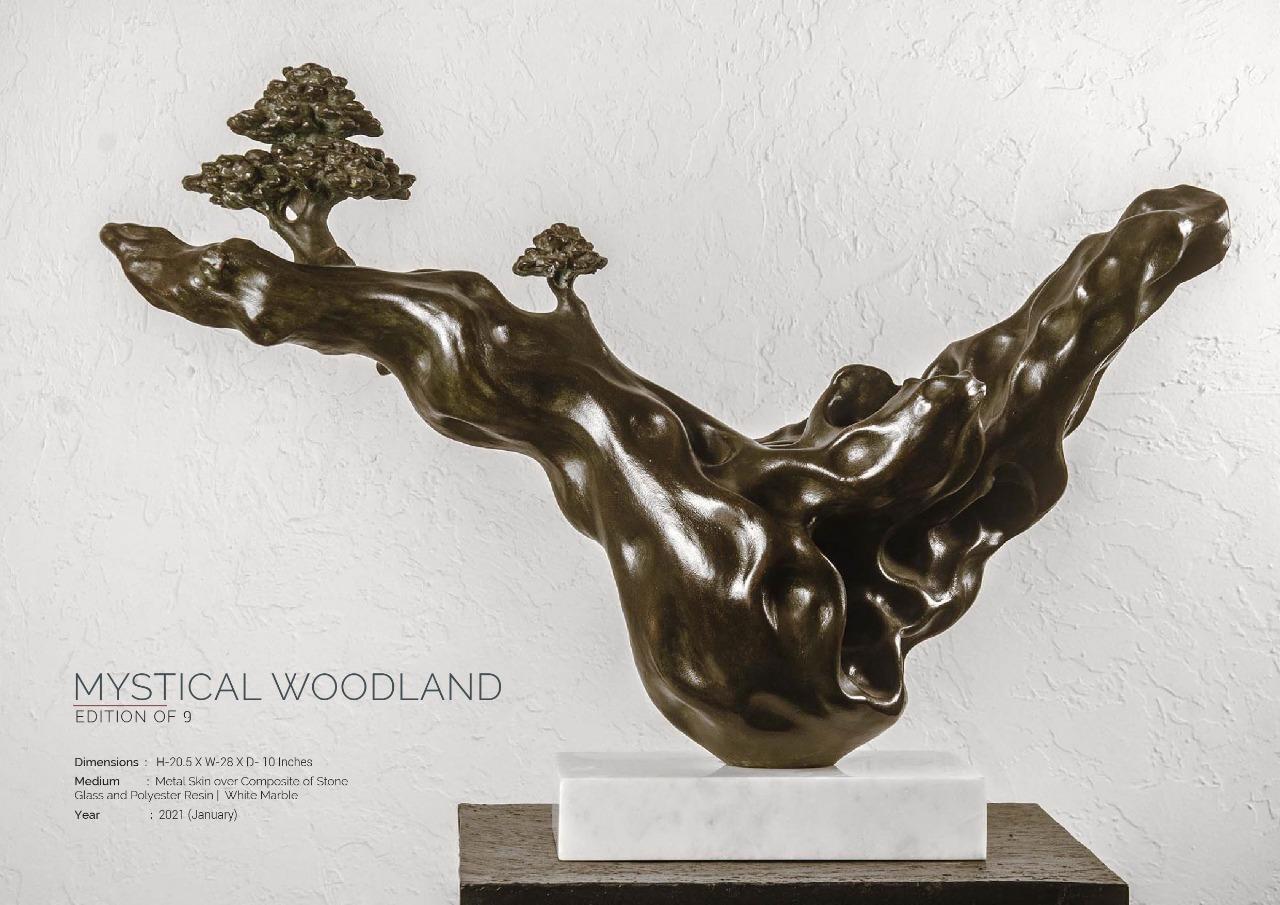Items Similar to Bariba People, Benin, Rare Terracotta Ceremonial Altar Vessel.
Want more images or videos?
Request additional images or videos from the seller
1 of 5
UnknownBariba People, Benin, Rare Terracotta Ceremonial Altar Vessel. Unknown
Unknown
About the Item
This pottery vessel, embellished with high relief figures, was made by women of the ethnic group of the Bariba (or Baatonu) in the northern provinces of Benin. The Bariba potters passed their trade from mother to daughter. They didn’t make their vessels on a pottery wheel but kneaded them by hand. The raw material they used was river clay. Various pieces of pottery were used in ceremonies by spirit mediums. The disc shape mouth of the pot was used as a fire basin. The light was produced with the help of balls of cotton or wool, soaked in shea butter and lit with fire. Yoruba influence is reflected in the figural pottery of the Bariba. The strong emphasis on the female figures’ breasts points to a fertility cult.
- Creation Year:Unknown
- Dimensions:Height: 15.75 in (40 cm)Width: 9.06 in (23 cm)
- Medium:
- Period:
- Condition:
- Gallery Location:brussel, BE
- Reference Number:
About the Seller
5.0
Vetted Seller
These experienced sellers undergo a comprehensive evaluation by our team of in-house experts.
1stDibs seller since 2021
14 sales on 1stDibs
- ShippingRetrieving quote...Ships From: leuven, Belgium
- Return PolicyA return for this item may be initiated within 3 days of delivery.
More From This SellerView All
- 17th C Stone statue of Saint Erasmus or Saint ElmoLocated in brussel, BESaint Erasmus or Saint Elmo (Antioch, ca. 240 – Formia, 303) was an Italian bishop and patron saint of the sailors. His attribute was the capstan, a winch on which the anchor chains were rolled up. He died as a martyr for his faith, and his bones were transferred to Gaeta in the 9th century, where they are kept in the cathedral to this day. The electric phenomenon of Saint Elmus fire is named after Saint Erasmus and the 16th C humanist Desiderius Erasmus. Little is known with certainty about Saint Erasmus' life. However, many legends may have been passed on orally until - no older writings are known with certainty. His birthplace was in present-day Syria. However, the persecution of Christians under Emperor Diocletian forced him to flee to Mount Lebanon...Category
17th Century Baroque Figurative Sculptures
MaterialsStone
- Sculptured polychromed Female modelled Head from artist workshop.Located in brussel, BEGustave Fontaine (Etterbeek 1877-1952 Brussels) was a sculptor–painter. He took courses in Saint-Josse-ten-Noode and continued his training at the Aca...Category
20th Century Art Deco Figurative Sculptures
MaterialsPlaster
- 18th C Polychromed fruitwood carved statue depicting Maria Magdalena, Germany.Located in brussel, BEThis beautiful polychrome and highly expressive statue 18th C statue represents Mary Magdalene in prayer, hands joined, eyes raised to the sky.It's of German originCategory
18th Century Other Art Style Figurative Sculptures
MaterialsWood
- Gustave Fontaine (1877-1952), polychromed model head.Located in brussel, BEGustave FONTAINE ( Etterbeek 1877-1952 Brussels). Sculptor–painter. Took courses in Saint-Josse-ten-Noode, continued his training at the Academy of Brussels and with the sculptor Julien Dillens...Category
20th Century Contemporary Figurative Sculptures
MaterialsPlaster
- Gustave Fontaine, Sculptured polychromed Female modelled Head.Located in brussel, BEGustave Fontaine (Etterbeek 1877-1952 Brussels) was a sculptor–painter. He took courses in Saint-Josse-ten-Noode and continued his training at the Academy of Brussels and with the sculptor Julien...Category
20th Century Contemporary Figurative Sculptures
MaterialsPlaster
- Gustave Fontaine (1877-1952), Selection of 3 Sculptures plaster model HeadsLocated in brussel, BEGustave FONTAINE ( Etterbeek 1877-1952 Brussels). Sculptor–painter. Took courses in Saint-Josse-ten-Noode, continued his training at the Academy of Brussels and with the sculptor Julien Dillens...Category
20th Century More Art
MaterialsPlaster
You May Also Like
- RARE PAIR OF ITALIAN PIETRA PAESINA COLUMNS, Italy, 19th CenturyLocated in Milan, ITRARE PAIR OF ITALIAN PIETRA PAESINA COLUMNS, Italy, 19th Century Pietra Paesina H 70 x Diam 9.5 cm H 27 1/2 x Diam 3 3/4 inCategory
19th Century Figurative Sculptures
MaterialsMarble
- Metal Classical Style Sculpture of AnterosLocated in Troy, NYThis European metal sculpture, most likely bronze or brass, is probably Anteros, God of requited love. The piece altogether is 18" in height; the figure itself 7.25". The bottom and...Category
Late 19th Century Romantic Figurative Sculptures
MaterialsMarble, Metal
- Leaves - The Mystical Link, Liquid Metal Coating, Composite of Stone GlassLocated in Kolkata, West BengalDivyendu Anand - Leaves - The Mystical Link - H 32 x W 20 x D 18 inches Edition 3/8 Liquid Metal Coating over Composite of Stone Glass and Polyester Res...Category
2010s Contemporary Figurative Sculptures
MaterialsGranite, Marble, Stone, Metal
- Mystical Woodland, Metal Skin Over Composite Stone Glass, Polyester ResinLocated in Kolkata, West BengalDivyendu Anand - Mystical Woodland - H 20.5 x W 28 x D 10 inches Edition 3/9 Metal Skin Over Composite of Stone Glass and Polyester Resin, White Marble...Category
2010s Contemporary Figurative Sculptures
MaterialsStone, Marble, Metal
- 'Mother and Two Daughters' signed black serpentineBy Colleen MadamombeLocated in Milwaukee, WI26" x 15" x 30" Black serpentine, signed. Colleen Madamombe (1964–2009) was born in Harare, Zimbabwe. Considered to be among the finest new talents from Zimbabwe, she won the award of Best Female Artist of Zimbabwe three years in a row, and became an established figure of the Second Generation of Zimbabwean stone...Category
1990s Figurative Sculptures
MaterialsStone
- ANTIQUE ITALIAN ARCHITECTURAL FRAGMENT OF PLINTH IN 'BRECCIA MEDICEA' MARBLELocated in Milan, ITBRECCIA FRAGMENT PLINTH Italy, 18th Century Breccia medicea 55 x d 25 cm 21 3/4 x d 9 3/4 inCategory
18th Century More Art
MaterialsMarble
